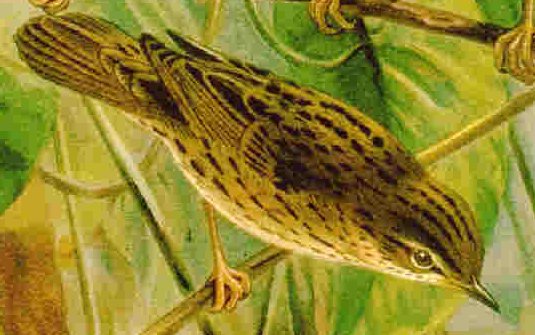Facts About Lanceolated warbler
The lanceolated warbler is a small bird belonging to the Old World warbler family, specifically within the grass warbler genus Locustella. This species breeds in northeastern Europe and across the Palearctic region, extending to northern Hokkaidō, Japan. When winter arrives, it migrates to Southeast Asia. The name "Locustella" is derived from the Latin word for grasshopper, a nod to the insect-like song of some species within this genus. The term "lanceolata" meaning spear-shaped in Latin, refers to the streaks on the bird's chest.
These birds prefer grasslands interspersed with shrubs or trees, typically near water sources such as bogs or wet clearings. They build their nests in tussocks and usually lay five eggs. Although the lanceolated warbler is a rare sight in western Europe, Fair Isle in Shetland is a notable location where this elusive bird may be observed. Adults have a streaked brown back and whitish-grey underparts marked with spear-shaped streaks. Their diet primarily consists of insects.
Spotting a lanceolated warbler can be quite challenging due to its secretive nature; it moves quietly through grass and low vegetation. Its song is a repetitive, mechanical reeling sound, reminiscent of an insect's buzz, and is often heard at dusk. There are two recognized subspecies: Locustella lanceolata lanceolata and Locustella lanceolata hendersonii.

 Ireland
Ireland